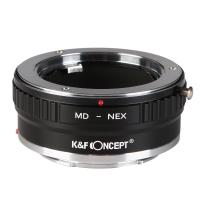What Is Scanning Probe Microscope ?
A scanning probe microscope is a type of microscope that uses a physical probe to scan the surface of a sample in order to obtain detailed information about its topography, structure, and properties at the nanoscale level. The probe, typically a sharp tip, is brought into close proximity with the sample surface and then moved across it in a systematic manner. As the probe interacts with the surface, various types of signals are generated, such as mechanical, electrical, or optical, which are then detected and used to create an image or map of the sample's features. Scanning probe microscopes can provide high-resolution imaging capabilities and are widely used in fields such as materials science, nanotechnology, biology, and chemistry for studying surfaces and manipulating matter at the atomic and molecular scale.
1、 Principle of operation of scanning probe microscope
A scanning probe microscope (SPM) is a powerful tool used in nanotechnology and materials science to investigate the surface properties of materials at the atomic and molecular scale. It allows researchers to visualize and manipulate individual atoms and molecules, providing valuable insights into the structure, composition, and behavior of materials.
The principle of operation of a scanning probe microscope involves the use of a sharp probe, typically a nanoscale tip, which is scanned across the surface of the sample. The probe interacts with the surface, and the resulting interactions are measured and used to generate an image or map of the surface properties. The most common types of SPMs are atomic force microscopes (AFMs) and scanning tunneling microscopes (STMs).
In an AFM, the probe is attached to a cantilever, which is deflected as it interacts with the surface. The deflection is measured using a laser beam, and the resulting data is used to create a topographic image of the surface. AFMs can also measure other properties such as magnetic forces, electrical conductivity, and mechanical properties.
STMs, on the other hand, work based on the principle of quantum tunneling. A voltage is applied between the probe and the sample, and electrons can tunnel through the vacuum gap between them. The tunneling current is highly sensitive to the distance between the probe and the surface, allowing for atomic resolution imaging.
The latest advancements in scanning probe microscopy include the development of new probe materials and designs, which enhance the resolution and sensitivity of the microscope. Additionally, techniques such as dynamic mode AFM and non-contact AFM have been developed to minimize the interaction forces between the probe and the sample, enabling imaging of delicate samples and reducing the risk of damage.
Overall, scanning probe microscopes have revolutionized our understanding of materials at the nanoscale and continue to be a vital tool in various fields of research, including nanotechnology, materials science, and biology.

2、 Types of scanning probe microscopes
A scanning probe microscope (SPM) is a powerful tool used in nanotechnology and materials science to investigate the surface properties of materials at the atomic and molecular scale. It allows researchers to visualize and manipulate individual atoms and molecules, providing valuable insights into the structure, composition, and behavior of various materials.
SPMs work by scanning a sharp probe over the surface of a sample, measuring the interaction between the probe and the surface. This interaction can be in the form of forces, electrical currents, or even chemical reactions. By analyzing these interactions, SPMs can generate high-resolution images of the surface, revealing details as small as a fraction of a nanometer.
There are several types of scanning probe microscopes, each with its own unique capabilities and applications. The most common types include:
1. Atomic Force Microscope (AFM): This type of SPM uses a small cantilever with a sharp tip to measure the forces between the tip and the surface. It can provide topographic images of the surface with atomic resolution and can also be used to measure various properties such as mechanical, electrical, and magnetic forces.
2. Scanning Tunneling Microscope (STM): STM operates by passing a tiny electric current between the probe tip and the surface. It measures the tunneling current, which is highly sensitive to the distance between the tip and the surface. STM is particularly useful for studying conducting materials and can achieve atomic resolution.
3. Magnetic Force Microscope (MFM): MFM is a specialized SPM that uses a magnetic probe to map the magnetic properties of a sample. It can detect variations in magnetic fields with high sensitivity, making it valuable for studying magnetic materials and devices.
4. Electrochemical Scanning Probe Microscope (EC-SPM): This type of SPM combines the capabilities of AFM with electrochemical measurements. It allows researchers to study electrochemical reactions at the nanoscale, providing insights into corrosion, battery materials, and other electrochemical processes.
In recent years, there have been advancements in SPM technology, such as the development of high-speed SPMs that can capture dynamic processes in real-time. Additionally, there has been progress in combining SPMs with other techniques, such as spectroscopy and microscopy, to obtain more comprehensive information about the sample's properties.
Overall, scanning probe microscopes have revolutionized our understanding of materials at the nanoscale and continue to be a vital tool in various scientific disciplines.

3、 Applications of scanning probe microscopy
A scanning probe microscope (SPM) is a type of microscope that uses a physical probe to scan the surface of a sample to obtain high-resolution images and gather information about its properties at the nanoscale level. The probe interacts with the sample surface, and the resulting data is used to create detailed images and maps of various properties such as topography, conductivity, magnetism, and chemical composition.
SPMs have revolutionized the field of nanotechnology and materials science by enabling scientists to study and manipulate materials at the atomic and molecular level. They have a wide range of applications in various fields, including physics, chemistry, biology, and materials engineering.
One of the key applications of SPM is in the field of nanoscale imaging. SPMs can provide detailed images of surfaces with atomic resolution, allowing scientists to study the morphology and structure of materials at the nanoscale. This information is crucial for understanding the properties and behavior of materials and for developing new materials with enhanced properties.
Another important application of SPM is in the field of nanomanipulation. SPMs can be used to manipulate individual atoms and molecules on a surface, allowing scientists to create nanostructures with precise control. This capability has opened up new possibilities for nanofabrication and nanotechnology, with potential applications in electronics, photonics, and medicine.
In recent years, there has been a growing interest in the application of SPM in the field of biological sciences. SPMs can be used to study biological samples such as cells, proteins, and DNA at the nanoscale, providing valuable insights into their structure and function. This has the potential to advance our understanding of biological processes and contribute to the development of new drugs and therapies.
Overall, scanning probe microscopy has become an indispensable tool for nanoscale research and has a wide range of applications across various scientific disciplines. Its ability to provide high-resolution imaging and manipulation at the atomic scale continues to drive advancements in nanotechnology and materials science.

4、 Advantages and limitations of scanning probe microscopy
A scanning probe microscope (SPM) is a type of microscope that uses a physical probe to scan the surface of a sample to obtain high-resolution images and gather information about its properties at the nanoscale level. The probe interacts with the sample surface, and the resulting data is used to create a detailed image.
Advantages of scanning probe microscopy include:
1. High resolution: SPMs can achieve atomic-scale resolution, allowing researchers to study materials and structures at the nanoscale level.
2. Versatility: SPMs can be used to study a wide range of materials, including metals, semiconductors, polymers, and biological samples.
3. Non-destructive: SPMs operate in a non-destructive manner, meaning that samples can be imaged and analyzed without causing damage.
4. Real-time imaging: SPMs provide real-time imaging capabilities, allowing researchers to observe dynamic processes and changes in real-time.
5. Various imaging modes: SPMs offer different imaging modes, such as atomic force microscopy (AFM) and scanning tunneling microscopy (STM), which provide different types of information about the sample surface.
However, there are also limitations to scanning probe microscopy:
1. Slow scanning speed: SPMs typically have slow scanning speeds, which can limit the amount of data that can be collected in a given time frame.
2. Sample preparation: SPMs require careful sample preparation, including cleaning and immobilization, which can be time-consuming and challenging for certain samples.
3. Limited sample size: SPMs have a limited scanning area, typically a few micrometers, which can restrict the size of the sample that can be analyzed.
4. Environmental limitations: SPMs are typically operated in a vacuum or controlled environment, which may not be suitable for studying samples in their natural conditions.
5. Probe limitations: The probe used in SPMs can wear out or break, requiring frequent replacement and calibration.
The latest point of view in scanning probe microscopy is the development of new techniques and advancements in probe technology. For example, there have been advancements in the use of functionalized probes for specific applications, such as chemical mapping or biological imaging. Additionally, there have been efforts to improve the scanning speed of SPMs through the development of new scanning algorithms and hardware improvements. These advancements aim to overcome some of the limitations of SPMs and enhance their capabilities for nanoscale imaging and analysis.






































